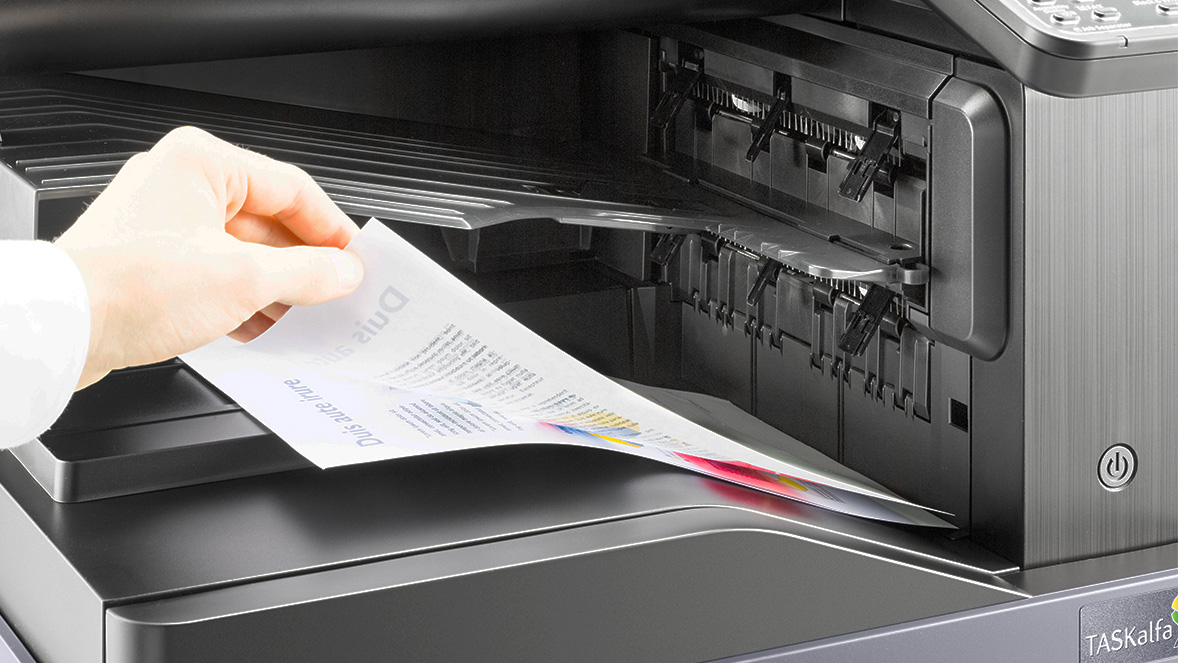Enterprise mobility management (EMM) is taking companies a step closer to the boundaryless office. But too many organisations don’t put enough care into creating a user-friendly mobility printing solution that allows employees to print out documents anytime and anywhere. It’s a relatively straightforward process once companies fully understand the process. The right mobility printing solution integrates with existing EMM systems, saving costs, maintaining security and business efficiency. Mobile printing is an important issue in the fast-moving digital world.
There may be a trend for organisations to move towards the paperless office concept, but it’s unusual for them to stop printing altogether. Despite important innovations such as DocuSign, there are a host of instances when print is still the preferred option. To get the most out of their business mobility solutions, companies need to ensure that mobile workers enjoy the same privileges as office-based employees. Part of that is allowing them to print out important documents whenever and wherever they want using mobile devices.
“Establishing a printing solution is fundamental to mobility”

Even when on the move, an increasingly popular trend across a number of sectors and job roles, professionals need to be able to print. Ensuring that they can do so effectively and securely without unnecessary complications is a key part of achieving business mobility for any company looking to optimise their way of working.
Working on the go
An enterprise mobility management is a pre-requisite for a modern organisation. Most office workers today carry out a significant portion of their work on mobile devices away from their offices. There’s a growing willingness to work on the go with whatever device is at hand. Smartphones, tablets and other portable devices facilitate a rapid response to customer needs. In theory, discarding geographical boundaries leads to reduced costs and rising productivity. It should also delight customers, especially in industries like banking, insurance, and healthcare, where speed of service is one of the biggest differentiators.
But an enterprise mobility strategy is not complete without a carefully considered mobile printing strategy. If individuals can print documents remotely from any devices, it enhances their flexibility, but too many businesses use primitive and potentially dangerous methods. It’s a common practice, for example, to provide every mobile device, which is on the same network as an organisation’s office-based computers, with the ability to print without restrictions. But having no permissions, no analytics and no rules for mobile devices is a recipe for disaster. First of all, the devices join the same network as computers that have to process sensitive company data. Secondly, giving everyone access to everything on mobile devices causes so much confusion that IT departments are overrun with queries.
Print management tools are essential
What the users of mobile devices require is access to the types of print management tools that determine access privileges for desktop users. For secure management, the best method is to integrate the mobile devices into an existing EMM solution, such as MobileIron, or XenMobile. There are various technologies that can carry out the integration process, including ThinPrint Mobile Print. A mobile device obtains a profile detailing which printers it is entitled to use. Once sent from a user’s device, mobile printing jobs can be encrypted and stored on the system. The most convenient method of retrieval is using a QR code from the mobile device, but a badge swipe, or a pin, also works well.
To further secure the devices, it is a good idea to prevent mobile printing jobs from going through the public cloud. Using private clouds and traditional data centres, it’s possible to configure the hardware, data storage and network to stop unwanted guests accessing the network. Using the EMM solution on top of a traditional data centre, or private cloud, creates the highest level of security.
Affordable solutions are out there
These solutions don’t have to be expensive. There’s no need to invest in mobile-enabled printers because mobile printing can be delivered to the existing fleet of printers. When a company’s EMM systems are used, there’s no need to update routers, or networks. The system is configured to support a full range of desktop, laptop and mobile devices. Costs can be kept down, too, by making the system simple enough so that users can take charge of their own printer access. Most mobile device users are pretty savvy when it comes to understanding new apps. The user-facing part consists of an integration into the print dialogue provided by iOS, or Android, and an app to connect to various printers on the network. Avoiding time-wasting calls to the IT help desk should be a priority for all companies. With a well-designed solution, the IT department would set the access privileges and the users would do the rest.
Secure and user-friendly options exist
Business mobility solutions are about increasing efficiency by speeding up response times. They are also about reducing costs. Mobile devices are more affordable than desktop computers, or laptops, so most organisations are happy for employees to use them. iPads have evolved and split-screen technology is now available, making them suitable for a wider range of jobs. Although they will never be used for everything, the trend is clear. Meanwhile, printing continues to be important for most organisations despite the move towards paperless offices. No one knows what will happen in two decades, but for now, enabling mobile devices to print in a secure and user-friendly fashion is an integral part of establishing the best possible business mobility solution.
Mobility
Organisations stand to make significant gains from making mobile working an opportunity for their professionals.



